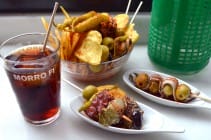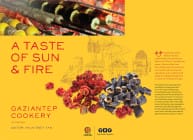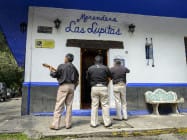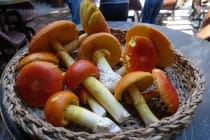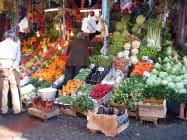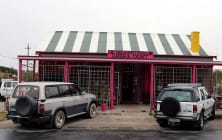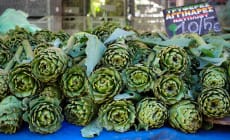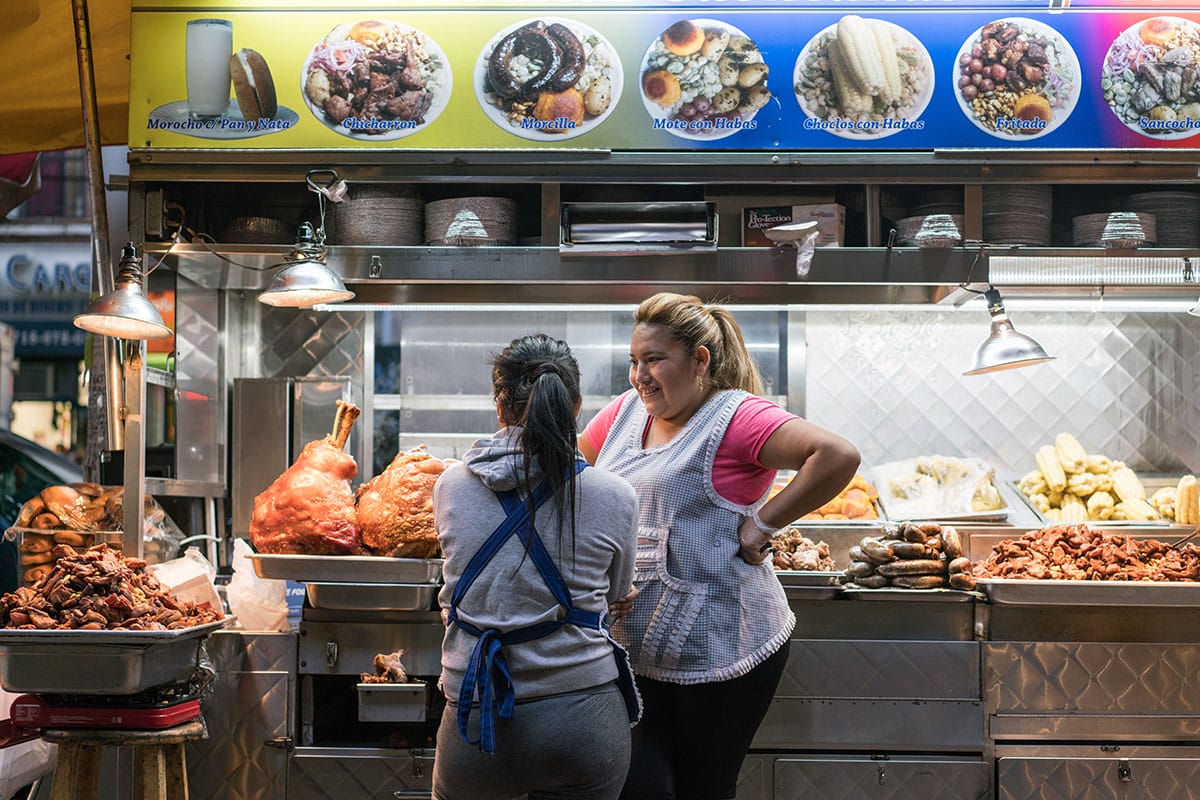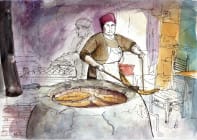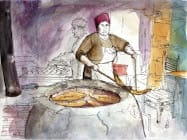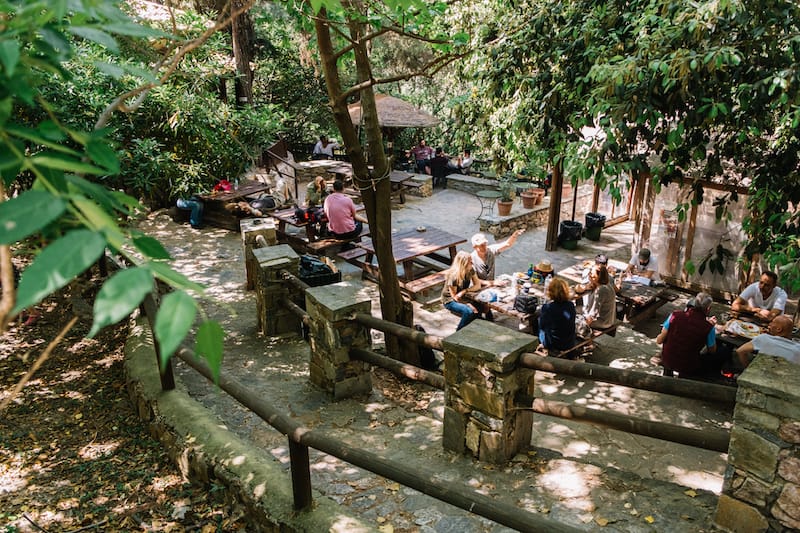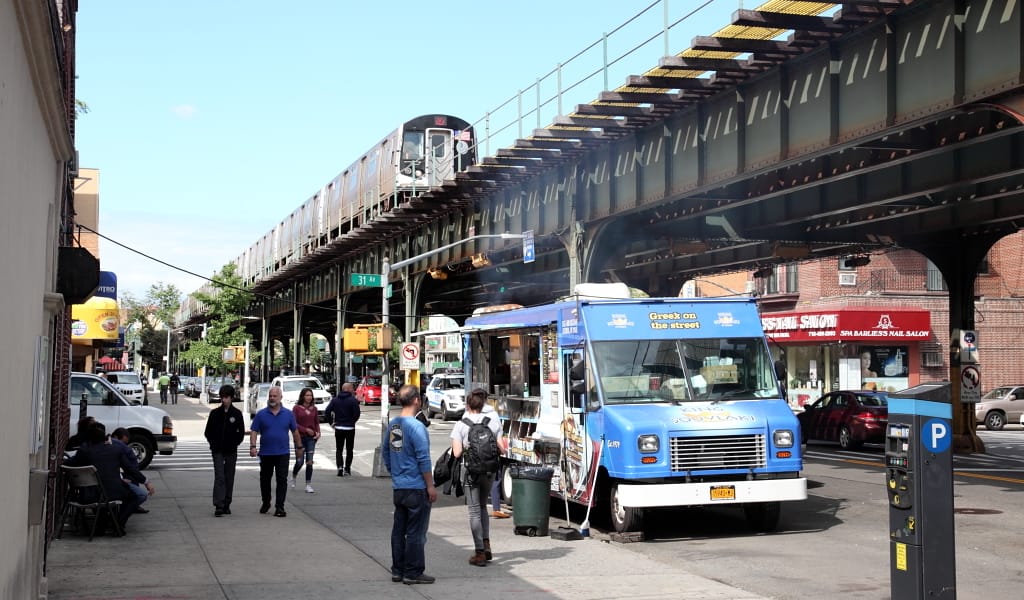Athens’ image as a concrete gray city with few green spaces and a lot of traffic might be hard to shake. But would you believe only 6.5km away from the bustling city center lies a beautiful, lush forest with ancient paths and Byzantine monuments – and a little canteen where you can enjoy lunch near an ancient spring?
There are, in fact, a few green hills that can be easily reached in a few minutes from Syntagma square by public transport. There’s the Lycabettus hill, Strefi hill, Filopappou hill, as well as the three mountains that surround the city: Parnitha (about 30km from the city center), Penteli (about 19km from the center) and the Kesariani side of Ymittos (only 6km from Syntagma). All three mountains have suffered devastating fires over the years and have lost significant parts of their lush vegetation, but all are still wonderfully green, providing Athens with much-needed oxygen and fresh air.
The canteen in question can be found on Ymittos mountain, which was, in antiquity, a place for worship and healing due to the natural springs that are abundant in the area, as well as the good climate. Excavations have revealed sanctuaries dedicated to Zeus and Apollo, and the Byzantine monastery of Kesariani is built on top of an Ancient Greek temple. The forest here was almost destroyed during the long famine of 1940-41, as the trees were used as firewood. It is not commonly known, even to locals, that the current forest of Kaisariani is man-made. Keti Argyropoulou, the wife of a Greek diplomat, was flying over Ymittos in 1946 and was appalled by the sight of the destroyed greenery and dilapidated monastery. She made it her life’s work to restore the monastery and bring trees back to the mountain. The forest is now part of the European Commission’s Natura 2000 resting and breeding area network for endangered species, as it is home to numerous types of rare birds and mammals, and is protected by the Philodassiki Foundation, a more than 100-year-old organization devoted to the reforestation of the hills around Athens.
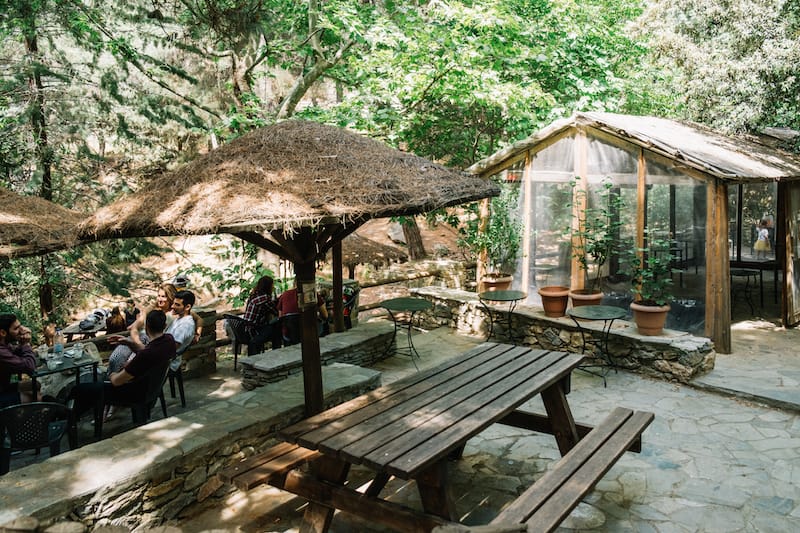
In the forest, a 30-minute walk from the Kaisariani cemetery and off the Kaisariani Monastery loop trail is a bustling picnic area and ancient spring, a well-kept secret of Athens. Come here to seek a rare moment in city life: either snacking on a wooden bench by the water, under the trees awakened by a gentle breeze or at one of the tables and chairs under grass umbrellas by a tiny stone building that serves as the forest’s canteen, Kalopoula Refreshments. Nearby, the Kalopoula spring gurgles and froths, as picnickers and hikers take a break to some surprisingly delicious, traditional Greek food in an oasis of green.
Markos and Daphne, a young couple sitting near us at Kalopoula Refreshments, told us that they love making a stop here after a long hike. “It is the best way to end the day before returning home – a place to recharge your batteries. Plus, the food is great,” Markos says. Most of the items on the menu are prepared on-site, like the saganaki (fried cheese), kayianas (eggs with tomatoes), fried meatballs and Greek salad. The pies all hail from a local bakery, and some of the dishes that need more time and a proper kitchen – such as the giant beans, boiled pork leg or the bean soup – are brought over from another municipal canteen, Ta Xylina (meaning, the wooden), situated a few kilometers away.
“Kalopoula has cheap food that reminds me of my mother’s cooking. Athens can get a bit chaotic, but one can forget about it here.”
The stone-covered Kalopoula canteen was opened in the 1980’s, and is entirely run by the Kaisariani municipality. This poses some problems, as the workers here are on contract and therefore change every eight months, meaning there is no continuity in who’s cooking the food – but the menu still hasn’t changed much over the years. The giant beans in red sauce, buttery soft, were our particular favorite. The meatballs were delightfully fluffy, and the freshly cut Greek salad was served with a good amount of olive oil, perfect for some papara (bread dipping). The salty saganaki made a nice meze, especially if you are drinking beer or tsipouro.

There are only two people working at the canteen, one making coffee at the register and one in the kitchen. This means service can be extremely slow on the weekend, when the place is swarmed by hikers and families. It is better to visit on a weekday to avoid the crowds and disappointment, as there are few benches available that fill up fast. The benches, however are nicely spaced apart, so there is a sense of calm and privacy, even when the place is full.
The system is self-service: You go up to the register, order your food, pay and then return your tray when you’re done. This gives visitors the freedom to mix and match items with their home-brought snacks, and minimizes the need for extra employers. Bread is given for free with every order, but not individual plates: Food here is made to be shared.
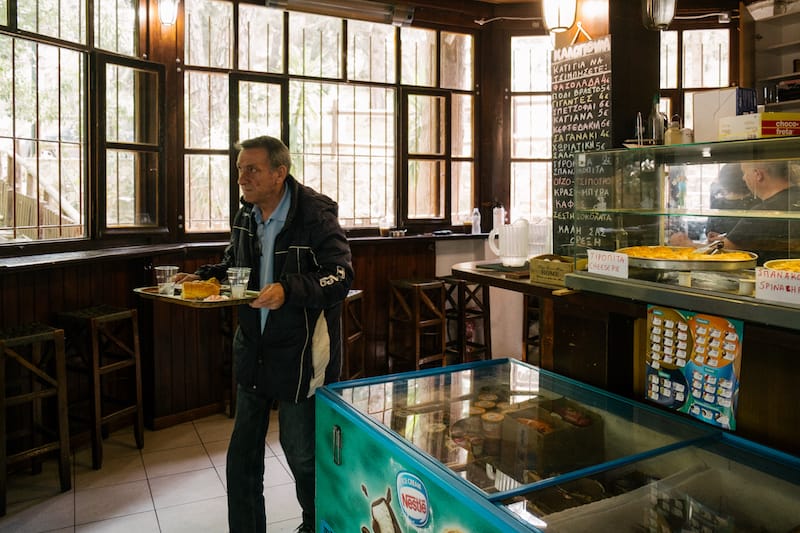
A trip to Kesariani forest is a must if you have extra days in Athens on your hands and would like to cool down during the hotter months. The temperature is considerably lower than most parts of the city. Apart from the beautiful walks in the forest you can visit the now perfectly restored Kesariani Monastery.
Despoina, a young student from Kalamata who lives in Kesariani – Kapodistrian University of Athens is situated only a few kilometers away – says she tries to come here as much as she can. “Kalopoula has cheap food that reminds me of my mother’s cooking,” she tells us. “I love it here; it is serene and peaceful. Athens can get a bit chaotic, but one can forget about it here.”
 July 6, 2016 Market Watch
July 6, 2016 Market Watch
Glória is a crossroads of Rio de Janeiro. It’s where the beach and bayside South Zone […] Posted in Rio September 4, 2017 Skewered
September 4, 2017 Skewered
Grilling meat is a Greek tradition that hearkens back at least to the days of Homer. In […] Posted in Queens January 25, 2023 Beat Blue Monday with New Orleans Red Beans
January 25, 2023 Beat Blue Monday with New Orleans Red Beans
“Blue Monday,” the tune made famous by New Orleans legend Fats Domino and written by the […] Posted in New Orleans
Published on May 31, 2019
Related stories
Meet the great characters of the Gloria market with us on our Sunday walk!
July 6, 2016
RioGlória is a crossroads of Rio de Janeiro. It’s where the beach and bayside South Zone end before you hit the historical and commercial Centro. It’s home to the storied, luxurious Hotel Glória and the working-class favela Santo Amaro, a five-minute jog away through lines of rifle-armed soldiers meant to keep crack users at bay.…
September 4, 2017
QueensGrilling meat is a Greek tradition that hearkens back at least to the days of Homer. In his Iliad, the poet wrote of a sacrifice of cattle to the god Apollo, after which the men “cut all the remainder into pieces and spitted them and roasted all carefully.” They feasted, they drank wine, they sang…
January 25, 2023
New Orleans | By James Cullen
New Orleans“Blue Monday,” the tune made famous by New Orleans legend Fats Domino and written by the equally legendary Dave Bartholomew, sums up how most of us feel at the beginning of the week after the giddiness of the weekend has worn off and reality beckons. “Blue Monday, how I hate Blue Monday,” Domino sings, while…

















